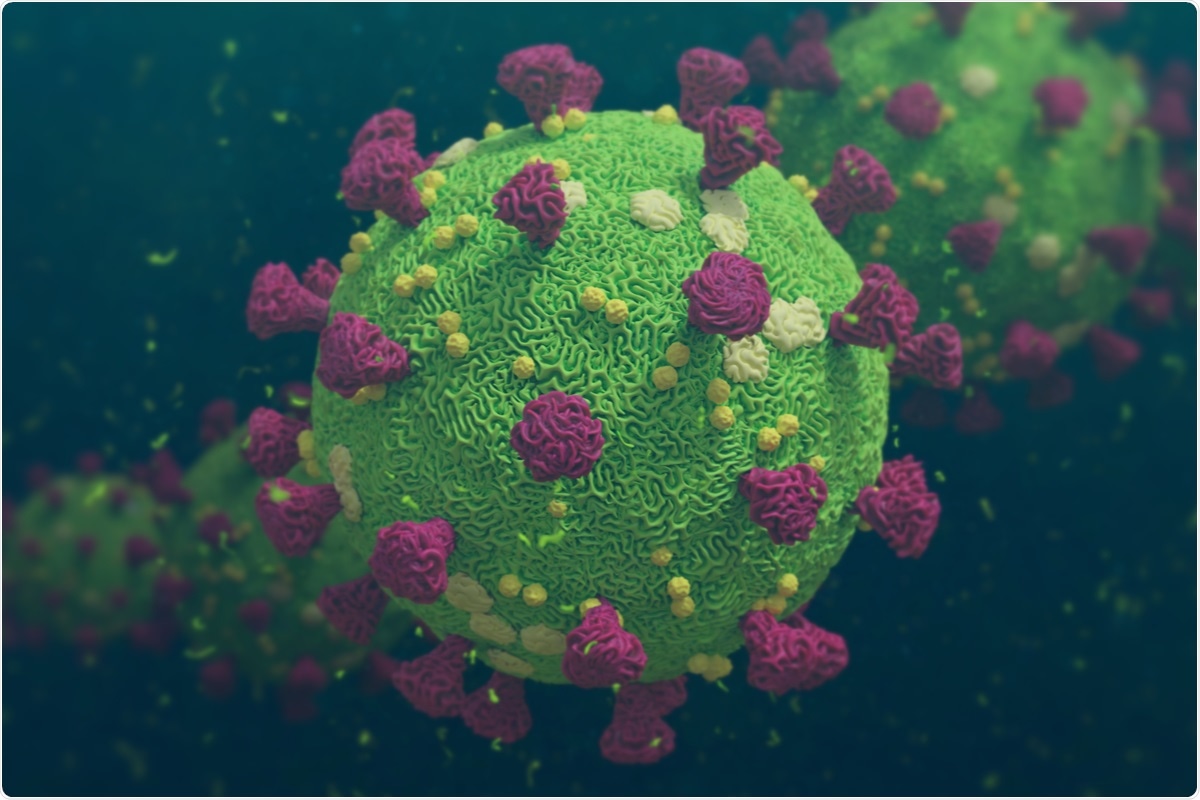The ongoing coronavirus disease 2019 (COVID-19) pandemic has claimed millions of lives, and there has been significant damage caused to the global economy. Despite the development of multiple highly effective vaccines, the spread of severe acute respiratory syndrome coronavirus 2 (SARS-CoV-2) has not been halted due to breakthrough infections.
 Study: Mitoxantrone modulates a glycosaminoglycan-spike complex to inhibit SARS-CoV-2 infection. Image Credit: Dotted Yeti/ Shutterstock
Study: Mitoxantrone modulates a glycosaminoglycan-spike complex to inhibit SARS-CoV-2 infection. Image Credit: Dotted Yeti/ Shutterstock
Through endocytosis or receptor-mediated membrane fusion, the SARS-CoV-2 virus enters the airway epithelial cells once it enters the human airway. Previous research has observed several receptors mediating viral attachment and entry, including tyrosine-protein kinase receptor UFO (AXL), angiotensin-converting enzyme 2 (ACE2), and neuropilin-1.
A group of researchers from several institutes within the USA performed a drug repurposing screen on an FDA-approved anti-cancer drug named Mitoxantrone. This drug binds Heparan sulfate (HS) and an HS analog (heparin) with high affinities. The cell entry of pseudo-viral particles coated with the S protein of SARS-CoV-2 is inhibited by Mitoxantrone, but the mechanism is unclear. Here, the authors performed a variety of procedures to understand better how Mitoxantrone inhibits SARS-CoV-2 entry.
A preprint version of the study is available on the bioRxiv* server while the article undergoes peer review.
The study
The authors hypothesized that the heparin/HS could use the same binding site to interact with Mitoxantrone and the spike protein because heparin/HS binds both Mitoxantrone and spike protein. To test their hypothesis, the authors conducted a pulldown experiment by incubating purified spike protein with heparin-conjugated beads in the presence and absence of Mitoxantrone.
Via immunoblotting, it was observed that the presence of Mitoxantrone did not inhibit the spike-heparin interaction; it enhanced the binding 7-fold. These results suggest that the spike-heparin complex can be stabilized by the interaction between Mitoxantrone and GAG, resulting in a spike, GAG, and Mitoxantrone complex.
The S2 domain displayed sensitivity to protease by Mitoxantrone and heparin treatment, suggesting that Mitoxantrone may block spike-mediated membrane fusion. To test this, the authors designed an in vitro membrane fusion assay by mixing two populations of and HEK293T cells expressing the spike protein and ACE2-GFP.
The spike expressing plasmid was co-transfected with a mCherry-expressing plasmid to identify spike-positive cells. No cell fusion was observed when the mCherry-expressing cells were mixed with ACE2-GFP positive cells or when mCherry and spike co-transfected cells were incubated with GFP-transfected cells.
However, rapid cell fusion was observed when spike-, mCherry-positive cells were incubated with ACE2-GFP cells for 90 minutes at a 1:1 ratio. A reduction in syncytium size, increased numbers of unfused cells, and significantly inhibited cell fusion were observed when cell fusion was carried out in the presence of Mitoxantrone.
The authors utilized a model that mimics the viral infection in a human airway to test the anti-SARS-CoV-2 activity of Mitoxantrone. For positive control, tissues were treated with remdesivir (a compound known to inhibit SARS-CoV-2) before infection. At 24 hours post-infection, the positive control was seen to have dramatically reduced the viral load but only partially reduced the viral titer at 96 hours post-infection.
Consistent with their previous findings, the authors observed that Mitoxantrone had dose-dependently reduced the viral load at both 24 hours and 96 hours post-infection. Compared with the remdesivir treated tissues, Mitoxantrone had dose-dependently a much more potent anti-SARS-CoV-2 effect. Mitoxantrone achieved similar levels of inhibition to remdesivir at a 20-fold lower concentration.
Levels of lactate dehydrogenase (LDH) were measured in the basal culture media to confirm the anti-SARS-CoV-2 effect of Mitoxantrone further. When cell death occurs, LDH is released to the cell exterior. Mitoxantrone-treated cells at 24 hours post-infection were shown to have inhibited virus-induced LDH release.
Implications
For other infectious diseases, drugs that target host factors have been successfully developed. For example, for the treatment of AIDS, an anti-HIV agent (Maraviroc), which targets the host's membrane protein CCR5, has been approved. Therefore, drugs such as Mitoxantrone and those with similar GAG-binding activities are promising options for future treatment strategies.
The results from this study suggest that the two hydroxyl groups in the anthraquinone moiety of Mitoxantrone may be the most promising target for the introduction of modifications, which may reduce the binding to DNA topoisomerase. If viruses utilize cell surface GAG for attachment and entry, Mitoxantrone and its derivatives could be considered possible treatments.
*Important notice
bioRxiv publishes preliminary scientific reports that are not peer-reviewed and, therefore, should not be regarded as conclusive, guide clinical practice/health-related behavior, or treated as established information.
- Zhang, Q. et al. (2021) "Mitoxantrone modulates a glycosaminoglycan-spike complex to inhibit SARS-CoV-2 infection". bioRxiv. doi: 10.1101/2021.10.15.464595.
Posted in: Medical Science News | Medical Research News | Disease/Infection News
Tags: ACE2, AIDS, Angiotensin, Angiotensin-Converting Enzyme 2, Assay, Cancer, Cell, Cell Death, Compound, Coronavirus, Coronavirus Disease COVID-19, DNA, Drug Repurposing, Drugs, Enzyme, Heparin, HIV, in vitro, Infectious Diseases, Kinase, Membrane, Pandemic, Plasmid, Protein, Receptor, Remdesivir, Research, Respiratory, SARS, SARS-CoV-2, Severe Acute Respiratory, Severe Acute Respiratory Syndrome, Spike Protein, Syndrome, Tyrosine, Virus
.jpg)
Written by
Colin Lightfoot
Colin graduated from the University of Chester with a B.Sc. in Biomedical Science in 2020. Since completing his undergraduate degree, he worked for NHS England as an Associate Practitioner, responsible for testing inpatients for COVID-19 on admission.
Source: Read Full Article
